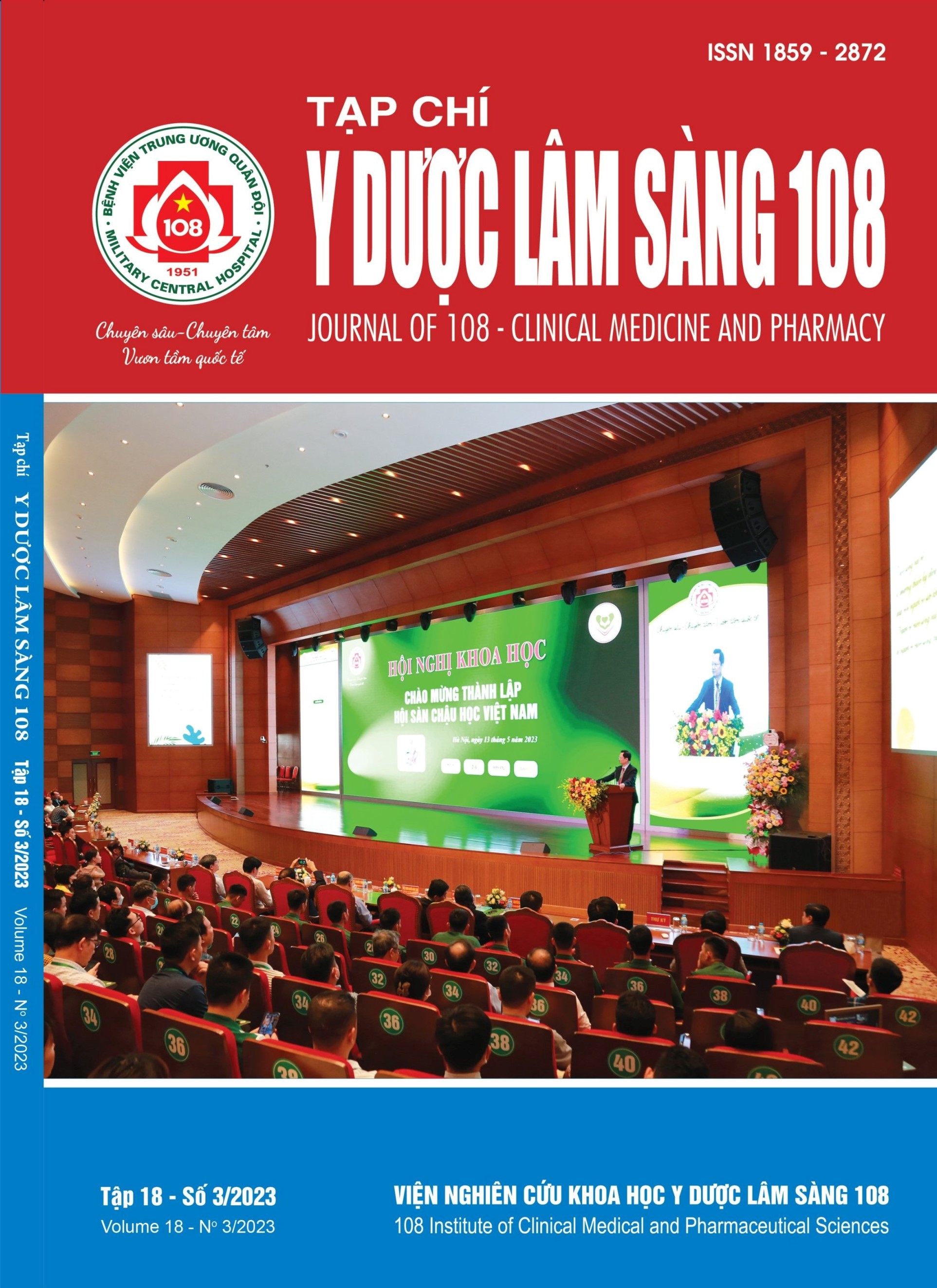The epidemiological characteristics of the Dengue virus serotyper causing dengue hemorrhagic fever in some districts of Hanoi (2017-2019)
Main Article Content
Keywords
Abstract
Objective: To determine the epidemiological characteristics of the Dengue virus serotypes that cause Dengue hemorrhagic fever in some districts of Hanoi from 2017-2019. Subject and method: A retrospective study of the statistical reports on 270 dengue patients were collected at the Center for Disease Control in Hanoi from 2017-2019. Result: Patients infected with DENV1; 2; 4 accounted for 60%, 38.5%, 1.5%, respectively. DENV1 in the year of endemic - 2017 (68.2%) prevailed over the year without epidemic - 2018, 2019 (5.4%). The distribution of DENV1 type by ecological region or by object characteristics was not different from other DENV types. Conclusion: Three types of DENV were detected, of which DENV1 had the highest rate (60%) followed by DENV 2 (38.5%), DENV 4 accounted for a very low rate (1.5%). DENV type distribution is different over time, the rate of DENV 1 in epidemic year - 2017 (68.2%) is higher than in no epidemic year - 2018, 2019 (45.4%). The distribution of DENV 1 type compared to other DENV types by subjects (children, adults, men and women) and ecological areas (rural, urban) did not differ.
Article Details
References
2. WHO (2021) Dengue và sốt xuất huyết Dengue. https://www.who.int/news-room/fact-sheets/detail/dengue-and-severe-dengue.
3. Đặng Thị Thúy (2013) Đặc điểm lâm sàng bệnh sốt xuất huyết Dengue theo các týp vi rút Dengue gây bệnh. Tạp chí Y học Dự phòng số 2 (137), tr. 30-34.
4. Fried JR, Gibbons RV, Kalayanarooj S et al (2010) Serotype-specific differences in the risk of dengue hemorrhagic fever: An analysis of data collected in Bangkok, Thailand from 1994 to 2006. PLoS Negl Trop Dis 4: 617. https://doi.org/10.1371/journal. pntd.0000617.
5. Soo K-M, Khalid B, Ching S-M, Chee H-Y (2016) Meta-analysis of dengue severity during infection by different Dengue virus serotypes in primary and secondary infections. PLoS One 11:e0154760. https://doi.org/10.1371/journal.pone.0154760.
6. Model of antibody-dependent enhancement of dengue infection Learn Science at Scitable. https://www.nature.com/scitable/content/model-of-antibody-dependent-enhancement-of-dengue-22403433/. Accessed 23 Feb 2023.
7. World Health Organization (2009) Dengue guidelines for diagnosis, treatment, prevention and control: new edition. World Health Organization.
8. Cao Minh Thắng (2015) Giám sát vi rút học bệnh sốt xuất huyết dengue trong chương trình mục tiêu quốc gia phòng chống sốt xuất huyết dengue tại khu vực phía Nam Việt Nam trong giai đoạn 2005-2004. Tạp chí Y Học Dự Phòng 5 (165), tr. 4246.
9. Đặng Thị Thúy (2021) Đặc điểm sinh học phân tử và mối liên quan với lâm sàng của týp dengue 1 gây dịch năm 2017. Tạp chí Nghiên cứu Y học 139 (3), tr. 108-116.
10. Takemura T, Nguyen CT, Pham HC et al (2022) The 2017 Dengue virus 1 outbreak in northern Vietnam was caused by a locally circulating virus group. Tropical Medicine and Health 50: 3. https://doi.org/10.1186/s41182-021-00386-0.
11. Cao J, Deng H, Ye L et al (2019) Epidemiological and clinical characteristics of Dengue virus outbreaks in two regions of China, 2014-2015. PLoS One 14: 0213353. https://doi.org/10.1371/ journal.pone.0213353.
12. Ommer D, Abdulaziz H, Elsiddig N et al (2021) Distribution of Dengue Virus Serotypes in Jazan Region, Southwest Saudi Arabia. Ann Public Health Reports 5:. https://doi.org/10.36959/856/520.
13. Duong V, Ly S, Lorn Try P et al (2011) Clinical and Virological Factors Influencing the Performance of a NS1 Antigen-Capture Assay and Potential Use as a Marker of Dengue Disease Severity. PLoS Negl Trop Dis 5: 1244. https://doi.org/10.1371/journal. pntd.0001244.
14. Harapan H, Michie A, Yohan B et al (2019) Dengue viruses circulating in Indonesia: A systematic review and phylogenetic analysis of data from five decades. Rev Med Virol 29: 2037. https://doi.org/10.1002/ rmv.2037.
15. Trương Uyên Ninh (2002) Giám sát sự lưu hành các týp virus Dengue tại Việt Nam, giai đoạn 1987-2001. Tạp chí Y học Dự phòng Số 5 (56), tập XII, tr. 21-26.
16. Jayadas TTP, Kumanan T, Gomes L et al (2021) Regional Variation in Dengue Virus Serotypes in Sri Lanka and Its Clinical and Epidemiological Relevance. Diagnostics (Basel) 11: 2084. https://doi.org/10.3390/diagnostics11112084.
17. Calvez E, Pommelet V, Somlor S et al (2020) Trends of the Dengue Serotype-4 Circulation with Epidemiological, Phylogenetic, and Entomological Insights in Lao PDR between 2015 and 2019. Pathogens 9: 728. https://doi.org/10.3390/pathogens 9090728.
 ISSN: 1859 - 2872
ISSN: 1859 - 2872
